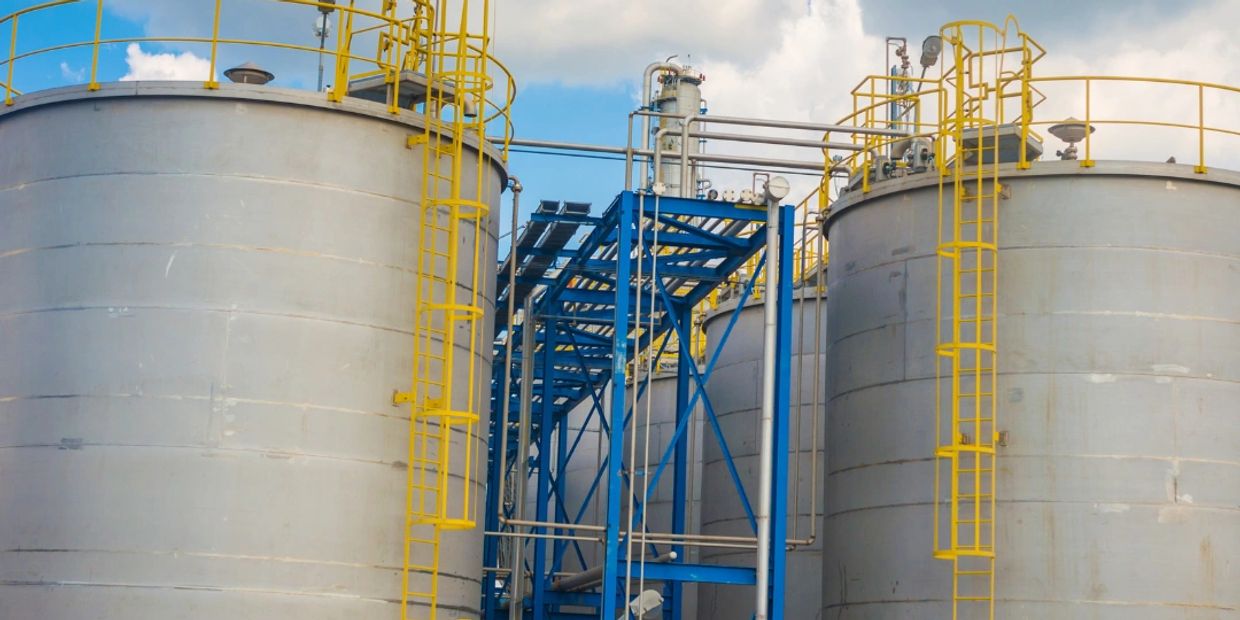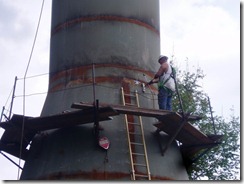What to Anticipate Throughout a Thorough Tank Welding Inspection
What to Anticipate Throughout a Thorough Tank Welding Inspection
Blog Article
Comprehensive Guide to Effective Container Welding Examination Techniques and Best Practices for Quality Guarantee
In the world of container welding, rigorous assessment techniques are critical for safeguarding architectural honesty and ensuring conformity with market laws. As we discover these vital components, it becomes clear that a proactive examination approach is not simply valuable, yet vital for functional success in atmospheres dealing with dangerous products.
Significance of Storage Tank Welding Assessment

Tank welding assessment acts as a preventative action, identifying possible defects such as fractures, porosity, or improper joint infiltration prior to they intensify into severe concerns. Normal inspections not only adhere to sector regulations and standards but also enhance the long life of the tanks, lowering the requirement for expensive fixings or substitutes.

Visual Evaluation Methods
Employing systematic aesthetic assessment methods is essential for analyzing the top quality and stability of welded joints in containers. This technique serves as the very first line of protection in recognizing potential flaws such as fractures, undercuts, and not enough infiltration. The examiner ought to approach the task with a keen eye, utilizing suitable devices like multiplying glasses, flashlights, and mirrors to boost exposure.
During the inspection process, the inspector needs to review the weld account, ensuring it abides by specified criteria and standards (Tank Welding Inspection). This includes taking a look at the bead size, height, and blend with the base material. Examiners need to also pay close attention to the bordering locations for indicators of thermal distortion or contamination that might affect the weld's performance
Documents of searchings for is crucial; assessors must videotape any kind of abnormalities, classifying them by severity for additional assessment. This methodical technique not just aids in immediate defect identification but additionally adds to long-lasting quality control by guaranteeing conformity with industry standards. Normal training and calibration of visual examination techniques additionally boost the dependability of analyses, inevitably resulting in more secure and a lot more long lasting container frameworks.
Non-Destructive Checking Approaches
Non-destructive testing (NDT) methods are frequently used in tank welding assessments to analyze the integrity of bonded joints without compromising their architectural integrity. These strategies are important for identifying flaws such as splits, voids, and inclusions that might result in tragic failures if left undiscovered.
Common NDT methods consist of ultrasonic testing (UT), which makes use of high-frequency audio waves to find inner imperfections; radiographic testing (RT), utilizing X-rays or gamma rays to visualize weld frameworks; and magnetic particle testing (MT), which reveals surface area and near-surface stoppages in ferromagnetic materials (Tank Welding Inspection). Fluid penetrant screening (PT) is additionally widely used, qualified of identifying surface-breaking defects Tank Welding Inspection by applying a fluorescent or shade comparison color
Each NDT technique has its certain applications and benefits, making it important for assessors to choose the suitable strategy based on the material and the sort of weld being evaluated. The integration of these NDT techniques right into the examination process improves the overall top quality assurance framework, guaranteeing that welded containers fulfill safety and security and performance requirements. Ultimately, NDT plays a crucial role in preserving the integrity and longevity of tank frameworks in different industrial applications.

Paperwork and Coverage
Guaranteeing extensive paperwork and coverage throughout container welding assessments is crucial for preserving compliance with industry standards and facilitating reliable interaction among stakeholders. Correct documentation functions as a thorough record of evaluation activities, searchings for, and any restorative activities taken throughout the welding process. This information is essential not only for quality assurance yet likewise for audits and regulatory evaluations.

A well-structured evaluation report must consist of information such as the date of evaluation, names of inspectors, welding procedures used, products utilized, and any type of variances from developed standards. Additionally, pictures and diagrams can enhance the quality of the record, offering visual context to the findings. It is also crucial to record any non-conformities together with their resolution, making sure that all stakeholders are informed of prospective risks and the steps required to alleviate them.
Moreover, maintaining a centralized database for all examination reports enables easy retrieval and evaluation, cultivating a society of openness and responsibility. By focusing on thorough documents and coverage, companies can not just promote quality control yet likewise enhance their online reputation within the sector, ultimately bring about improved safety and functional efficiency.
Continual Renovation Practices
Constant enhancement practices are necessary for boosting the top quality and efficiency of tank welding examinations. One effective technique entails normal training and upskilling of evaluation workers to remain abreast of the most current welding innovations and requirements.
Moreover, making use of data-driven analysis enables organizations to track examination results, recognize trends, and determine areas for improvement. Employing devices Homepage such as origin evaluation can assist in understanding the underlying problems causing flaws, allowing targeted interventions. Furthermore, getting responses from inspection groups and stakeholders develops a joint atmosphere that urges innovative services.
Integrating advanced technologies, such as computerized evaluation systems and real-time tracking, can substantially boost official statement the precision and rate of inspections. Routine audits of the evaluation processes likewise add to a society of accountability and continuous refinement. Inevitably, these constant enhancement methods not just elevate the quality of container welding evaluations but likewise contribute to overall functional quality and consumer satisfaction.
Conclusion
In verdict, efficient storage tank welding assessment is critical for guaranteeing the architectural integrity and security of storage systems, specifically those handling harmful materials. Utilizing a combination of aesthetic assessment strategies and non-destructive testing methods facilitates the early recognition of defects, consequently maintaining compliance with market requirements. In addition, robust documentation and a commitment to continuous renovation boost top quality assurance practices. Inevitably, these actions contribute significantly to operational quality and the prevention of prospective safety and security threats.
Report this page